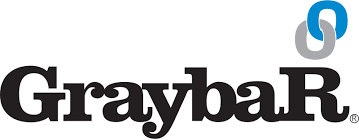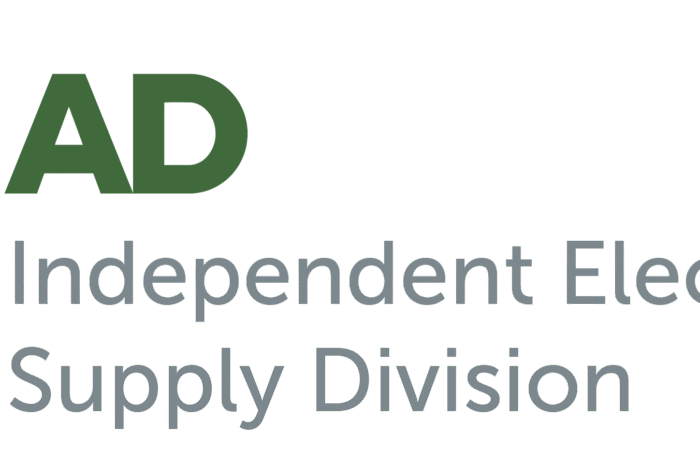Distributor End of Year Performance
 Over the past few weeks a number of national distributors have released their 2017 performance and earnings reports. AD, Grainger, Graybar, Anixter and WESCO and others have made news. We’ve also talked to a number of manufacturers who see the “highlight” numbers and use them as benchmarks, so we’ve reviewed and sought to find some trends.
Over the past few weeks a number of national distributors have released their 2017 performance and earnings reports. AD, Grainger, Graybar, Anixter and WESCO and others have made news. We’ve also talked to a number of manufacturers who see the “highlight” numbers and use them as benchmarks, so we’ve reviewed and sought to find some trends.
Overall, business is improving, especially in the industrial segment.
AD
In AD’s press release, the electrical industry’s largest marketing group reported:
- Total company sales up 10% (remember, this is across 12 divisions, not electrical only)
- On a same store basis, electrical was up 10% (multi-country and, for manufacturers, consider the impact of copper, especially for wire / cable, and steel for conduit, before comparing this number vs your product category performance)
- Same store sales in US grew 8% (Mexico and Canada were higher off of smaller basis and this is may be for all divisions.)
- Additionally
- AD’s eCommerce / eContent group now has 2.4M SKUs to support AD members across 6 industries.
AD represents a number of the larger electrical distributors in the industry and most of the independent Rockwell distributors in the US, hence strong industrial exposure. It is a good benchmark for “balanced” distributors. Reading between lines, mid-upper single digits for US electrical sales would be a fair assumption, inclusive of commodities.
Graybar
While Graybar hasn’t released a press release on their end of year performance, for comparison sake reviewed their Q3 SEC 10-Q, hence 9 months of revenue:
- Graybar’s sales were up 3.4%, inclusive of their business in Canada and their datacom business.
WESCO
WESCO had their analyst call earlier this month. A review revealed:
- Aside from seeking growth in 2018 (obviously), also seeking margin expansion (seeking to do through “pricing sourcing” and “lean”)
- Organic sales up 10% (overall for Q4, not for year)
- Industrial up 12% in US (for quarter)
- Infer that they are taking share by stating industrials are seeking supplier consolidation. (Feedback from national chain organizations, distributors and manufacturers dispute this, but could be account-specific.)
- Construction up 7% in the US for the quarter
- Backlog growing
- WESCO has a new US sales leader, came from Honeywell / Allied Signal, as Andy Bergdolll left (became CEO at Diversitech, a manufacturer and master distributor in the HVAC and electrical industry (under Morris Products). More change at the top.
- Brief mention of growth in lighting (and have heard that the move from Philips to GE has been “less than satisfactory” and that revenue has dropped significantly. Philips was able to move business to other distributors based upon brand preference.)
- Gross margin in Q4 was 19.2% across all businesses, down 20 basis points vs last year. Construction and utility markets lower (more competitive business.)
- Net profitability benefited from a reduction in tax rate from 26% to 23.9%.
- For 2017
- Up almost 5% overall
- 19.3% overall GM
- 2018 outlook
- 3-6% for year (same as rest of industry)
- Q1 – 6-9% growth (so, when does business drop to result in 3-6%, and why?)
- Expect to benefit by 2 points from tax cut, hence improving net profitability
- 3-6% for year (same as rest of industry)
- From analyst questions
- WESCO saw some higher transportation costs (which we are also hearing from manufacturers)
- “We still are having difficulty getting full pass-through of the inflation from our suppliers down to our customers” (but able to obviously do it for wire / cable. Question becomes, who leads the market down … as it needs to slowly push up. Is WESCO considered a price leader?)
- Seeing manufacturer price increases in the 2-5% range, changes by category.
- WESCO mentioned that independent electrical distributors run on lower operating margins when asked about benefit of tax cuts (while net may be lower (especially when reported through the NAED PAR report), this is the result of these companies being Sub S, in reality, with “add-backs”, independent distributors are as profitable, if not more profitable. Gross margins are comparable, and at times higher, especially for industrially-oriented distributors.)
- Hearing customers talk about “capital expensing” and the potential impact on projects, which could accelerate customer spending.
- Historically price increases are about 1% with this year closer to 2% due to commodities.
- #1 focus of WESCO team is improving margins (but since also want growth, margin improvement will need to come through cost management (consolidation, negotiation, rebates) and improved throughouput / productivity aside from tax benefits and other financial management.)
- Datacom / communications segment up high single-digits, and low double digits in Q4 albeit flatish in US in Q4 due to non-repeating projects from prior year
- And while WESCO shared the above during their call, their slide presentation shared more finite information:
-
- While their Q4 was up 10% in Q4, this was after -1.7, 1, 8.6 for the preceding 3 quarters. Overall for the year they were up 4.7% inclusive of FX impact … 4.5% without the benefit of foreign currency (primarily Canada).
- Based upon input from DISC, the electrical industry’s well regarded forecaster, this was somewhat below the industry growth rate.
- Their industrial was up 14% for Q4, 8% for the year
- Construction market was up 8.9% (7% in US, 13% in Canada) for the quarter but only 1.7% for the year
- Discounting wire / cable, which is 15% per their information which is in the investor slides, would reduce their growth by 3.75% for a nominal Q4 US growth and a negative construction performance for 2017 that would be further impacted if they did not conduct their contractor group travel program. In 2018 they are going on an Alaskan cruise)
- Utility Q4 was up 9.1% (10% US, 7% Canada) but 2.3% for the year
- CIG (commercial, institutional, government) was up 4.8% for quarter and year.
Additionally, this information includes their non-electrical businesses which, as you know, includes safety products, datacom, their CSC wire business and Carlton-Bates which is OEM and the structured home business.
- While their Q4 was up 10% in Q4, this was after -1.7, 1, 8.6 for the preceding 3 quarters. Overall for the year they were up 4.7% inclusive of FX impact … 4.5% without the benefit of foreign currency (primarily Canada).
-
- Key takeaways
- a growing industrial market.
- Limited commentary on lighting, especially since that is a growth segment, at least unit-wise, somewhat revenue-wise, in the electrical space
- No comments regarding eBusiness / eCommerce (and we’ve heard that their site has limited / no activity, but what % of industrial business is electronic … even if EDI? It is a way to improve productivity and is something that is definitely a Grainger value-added … and remember, about 15-20% of Grainger is electrical, hence they are both playing in the MRO space.)
Grainger
Grainger held their analyst call in late January. Below is their market insights:
- Saw market growth for first time since 2014
- Combining some features from Gamut.com with www.grainger.com relating to product search. (highlights the fact that, in eCommerce, need to continuously iterate and innovate to move the needle)
- Reducing branches in Canada to improve the business.
- For 2017, sales increased 3% overall. GP$ were flat.
- For quarter, up 11% gross, 7% net, due to pricing (so, really, 7%) and GP$ up 4% (so, indicates industrial growth and possible pricing benefits … focusing on GP$ per order, not necessarily GM%)
- US sales up 5%
- US large customers up 8% vs prior year
- US mid-size customers up 26%!
- Heavily driven by marketing / eMarketing initiatives
- Account acquisition, although small to date (takes time and repetition / commitment)
- Account penetration
- Customer reactivation
- Highlights the potential of investing in marketing vs thinking about marketing as promotions, premiums and events.
- 2018
- Expect sales growth of 5%
- Increasing digital investments with tax cut benefits
- From analyst questions
- Feel that they are capturing business through marketing and price changes as well as the improving demand. (Taking share as overall market not growing at 11% for demand – constant dollars vs prior year. Question becomes, whom are they taking share from, especially since many mention “Amazon”.)
- Investing more heavily in digital in the US to pursue customers and productivity
- Seeing “low single digit” price increases from suppliers and may “add a little” to improve gross margin (a good practice distributors should emulate to improve their net in a ‘pennies’ business’ … even if only .1-.25% on selected products / categories.)
- Heavy manufacturing was strong last quarter (industrial)
Some takeaways
- Growth in the industrial segment … market demand
- Benefits of proper pricing
- Using marketing as a “sales driver / sales enhancer”
- Marketing to lapsed and non-contract accounts
- Growth in digital initiatives and eMarketing
Anixter
Anixter released its earnings in late January. Some highlights:
- Q4 revenue of $2.01 billion, up 6.3% vs prior year (would’ve guessed should be higher due to wire pricing, but …)
- Net margin of 1.86%
From their slide presentation:
- Excluding copper, Q4 would be up 4.2% organicly
- Strong 9.8% organic growth in EES division (electrical & electronic) and 9% in UPS (utility) for 4th quarter
- EES up 7.1% for year
- Strong growth on OEM side
- Emerging markets was up 13%. North America was up only 2.9%.
- North America is 82% of business.
- Network business, in the US, was down 1.7%
- EES EBITDA 5.7%
- Expect tax cut to reduce taxes from 35% to 21% with nominal increase in state taxes
Hopefully some of these insights help you in comparing your performance. Some trends … industrial is growing, non-resi construction is “steady” from a national perspective.
What are you seeing from these companies? Competing against them? Selling through them? Are they taking share? Competing on price?























